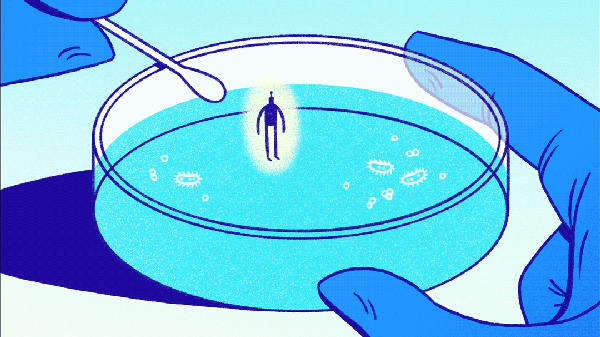Nanotechnology can already puncture cancer cells and drug-resistant bacteria. What will it do next? By Dhruv Khullar  Illustration by Josie Norton In the novel “Prey,” by Michael Crichton, scientists design nanobots that can swim through our bodies and act as microscopic cameras that capture detailed images of our blood vessels, tissues, and organs. Crichton being Crichton, the bots spiral dangerously out of control, with near-catastrophic consequences. I first read the book in high school, and the idea that nanotechnology might one day reshape medicine stayed with me. Last year, I came across a study, in the journal Science Advances, proposing a novel method for treating infections caused by bacteria that had evolved resistance to traditional antibiotics. Researchers at Rice University had created “molecular machines”—microscopic drills, ten thousand times smaller than the width of a single human hair—that could attach to bacterial-cell membranes. When you shone a light, they spun millions of times a second, rupturing the membranes and killing the bacteria. Instead of a chemical attack—the way most drugs work—the machines inflicted a mechanical destruction, a kind of death the pathogens hadn’t experienced before, and against which they might struggle to develop resistance. Since then, the team has deployed new nanomachines that vibrate like tiny jackhammers, punching holes through cancer cells, and rendering mice with melanoma cancer-free. This winter, I visited with scientists at Rice to witness the nanomachines in action. I saw images of healthy bacteria transformed to shrivelled lumps; on a lab bench, lethally infected worms wriggled happily after the machines had apparently destroyed the bacteria within. The technology is still years away from testing in humans, but it hints at a new therapeutic approach, and, perhaps more fundamentally, a new way to manipulate the building blocks of life. Much of modern medicine is rooted in biochemistry, but, as one researcher told me, “We’re now at a place where we can influence the physics of the cell.” Support The New Yorker’s award-winning journalism. Subscribe today » |
No comments:
Post a Comment